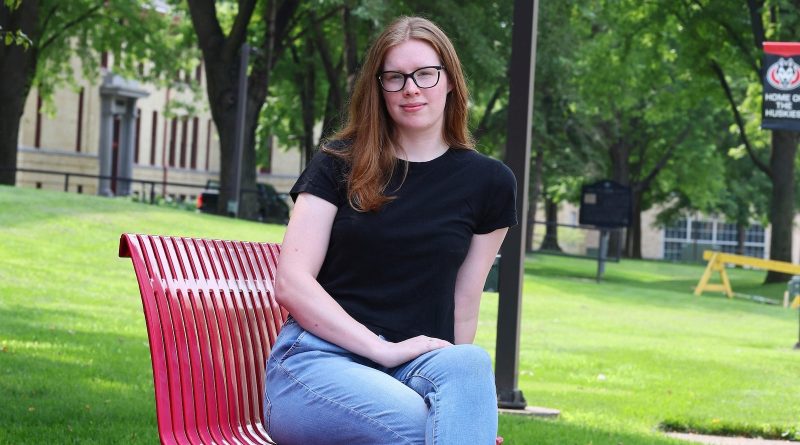US colleges finally making tough decisions on cutting majors and programs after years of delay
Christina Westman had aspirations of working with individuals suffering from Parkinson’s disease and stroke as a music therapist when she commenced her studies at St. Cloud State University.
However, her academic journey was disrupted in May when officials at the Minnesota college revealed a proposal to remove its music department along with cutting 42 degree programs and 50 minors.
This forms part of a surge of program reductions in recent months, as institutions of higher education, both large and small, strive to balance their budgets. Among the financial challenges they face: the depletion of federal COVID relief funds, escalating operational expenditures, and a decline in the number of high school graduates opting for direct enrollment in college.
The cutbacks have implications beyond mere financial savings or job cuts. Often, they instigate disruption for students who selected a particular institution for its specific degree offerings and then committed financially through tuition or student loans.
“I’ve been extremely anxious about it,” expressed Westman, 23, as she embarked on the process that eventually led her to transfer to Augsburg University in Minneapolis. “It’s the fear of the unknown.”
At St. Cloud State, the majority of students will be able to complete their degrees before the cutbacks take effect, but Westman’s major in music therapy was a nascent one that had not yet commenced officially. Over the past three months, she has been frantically searching for employment in a new city and subletting her apartment in St. Cloud after already signing a lease. She was scheduled to move into her new residence on Friday.
For years, many colleges postponed making budget reductions, according to Larry Lee, who served as interim president of St. Cloud State before departing last month to assume the presidency of Blackburn College in Illinois.
College enrollment declined during the pandemic, but officials were optimistic that the numbers would rebound to pre-COVID levels and had utilized federal relief funds to sustain their budgets in the interim, he noted.
“They were hanging on, hanging on,” Lee remarked, emphasizing that colleges must now confront their new reality.
Higher education managed to recover some ground last autumn and in the spring semester, primarily as community college enrollment began to rise, data from the National Student Clearinghouse Research Center revealed.
However, the outlook for four-year colleges remains concerning. Apart from growing apprehensions regarding the cost of higher education and the enduring impact of student debt, the pool of young adults is diminishing.
Birth rates declined during the Great Recession of 2007 to 2009 and have not rebounded since. Consequently, these smaller cohorts are now preparing to graduate and enter college.
“It’s an incredibly challenging equation to overcome,” stated Patrick Lane, vice president at the Western Interstate Commission for Higher Education, a prominent authority on student demographics.
Further complicating matters is the tumultuous revamp of the financial aid application by the federal government. Numerous students entered the summer break still uncertain about their college plans for the fall and how they would finance their education. Despite the availability of jobs, albeit not as abundant as last year, some experts are concerned that students may opt out of enrollment altogether.
“The upcoming year leading into the next autumn is going to be challenging,” predicted Katharine Meyer, a fellow in the Governance Studies program at the nonprofit Brookings Institution’s Brown Center on Education Policy. “I believe many colleges are genuinely worried that they will not meet their enrollment targets.”
Many institutions like St. Cloud State had already begun depleting their budget reserves. The university’s enrollment peaked at approximately 18,300 students in fall 2020 before steadily declining to about 10,000 students in fall 2023.
According to Lee, St. Cloud State’s student body has now stabilized, but the expenditure was excessively high for the diminished student population. The college faced a budget deficit of $32 million over the past two years, necessitating extensive cutbacks.
Some institutions have resorted to more drastic measures, shutting down entirely. This occurred at the 1,000-student Birmingham-Southern College in Alabama, the 900-student Fontbonne University in Missouri, the 350-student Wells College in New York, and the 220-student Goddard College in Vermont.
However, program reductions seem to be more prevalent. Two of North Carolina’s public universities recently received approval to discontinue over a dozen degree programs spanning from ancient Mediterranean studies to physics.
Arkansas State University announced last autumn its intention to phase out nine programs. Three of the 64 colleges in the State University of New York system have terminated programs due to low enrollment and financial challenges.
Other institutions reducing and phasing out programs include West Virginia University, Drake University in Iowa, the University of Nebraska campus in Kearney, North Dakota State University, and, on the opposite side of the state, Dickinson State University.
Experts anticipate that this is just the beginning. Even institutions not immediately implementing cuts are reassessing their academic offerings. Officials at Pennsylvania State University are scrutinizing redundant and under-enrolled programs as student numbers dwindle at their satellite campuses.
Students in smaller programs and those studying the Post Views: 266

